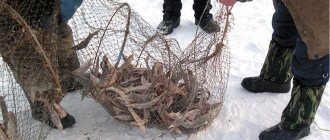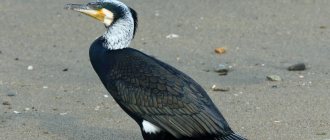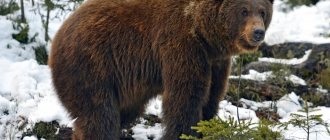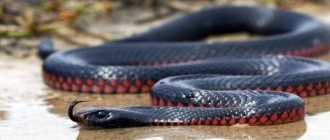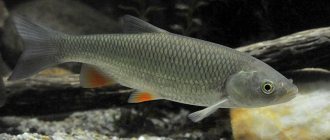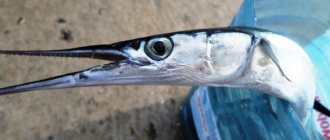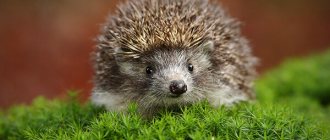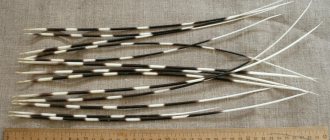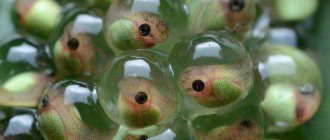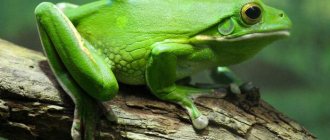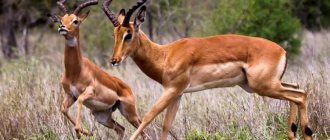Sturgeons include a certain group of fish that represent the sturgeon family. Many people, when they hear the word sturgeon, understand the meat and caviar of this family, which have always been and are valued in cooking. Since ancient times, this fish has been associated with wealth, since its meat and caviar have always been present on the tables of nobles and other elites. Nowadays, sturgeon is considered a very rare fish, so specialists from many countries are making a lot of efforts to preserve and increase sturgeon populations around the world.
Sturgeon fish: description
This family is distinguished by its elongated body and represents the most ancient cartilaginous fish on the planet. The ancestors of the modern sturgeon family inhabited many rivers even during the period of dinosaurs. This is evidenced by animal fossils that have been found by scientists. According to scientists, these fish skeletons are approximately 80 million years old.
Appearance
As a rule, the body length of adult individuals reaches 2 meters, with a weight of 50 to 80 kilograms. At one time, a sturgeon was caught, about 8 meters long and weighing more than 800 kilograms. The body is spindle-shaped, covered with scales, bone growths, as well as plates that represent fused thickened scales. On the body of the fish there are 5 such rows located along the body. Two such rows are located on the belly, and the rest, one each, on the back and sides. The number of plates depends on the specific type of sturgeon.
Interesting to know! Like any other fish, the body color of sturgeons depends on their habitat, so the shade of sturgeons can be brown, gray or sand. The belly of this fish is light, and the back is either green or olive in color.
Sturgeons have quite sensitive antennae, with the help of which the fish probes the bottom and finds food for itself. The mouth of sturgeons is not large and toothless. It is located at the bottom of the pointed part of the muzzle. After birth, young individuals still have teeth, but as they grow older, they wear down. Sturgeons have fairly hard fins, a large swim bladder, and two pairs of gills. The skeleton of this fish does not contain bone tissue and consists of cartilaginous tissue, and instead of a spine there is a notochord.
Behavior and lifestyle
Sturgeon can be found at depths of up to 100 meters, while they lead a bottom-dwelling lifestyle, where they find food for themselves. These fish are adapted to living in cold water environments, as well as to long periods of fasting. Due to the behavioral characteristics of the sturgeon, they are divided into:
- On migratory species, which for their livelihoods choose coastal, slightly saline waters of the seas and oceans within the estuaries of rivers. Before spawning or for wintering, migratory sturgeon species rise to the upper reaches of rivers, covering impressive distances.
- On semi-anadromous species, which do not make significant migrations and reproduce directly at river mouths.
- On freshwater, for which a distinctive feature is a sedentary lifestyle.
Lifespan
Sturgeon can live from 40 to 60 years, while beluga can overcome the 100-year barrier, Russian sturgeon can live for half a century, and stellate sturgeon and sterlet live a maximum of 30 years. The life expectancy of sturgeons is influenced by many factors, including natural ones, associated with seasonal fluctuations in water temperature, as well as anthropogenic ones, in the form of pollution of seas and oceans.
Diet of sturgeon fish
Nutrition largely depends on age and season. The fry feeds on a variety of crustaceans, amphipods and similar small animals; as they grow older, larger crustaceans, various mollusks, and small fish are added to the diet. Adult fish in rivers feed mainly on small fish, such as, for example, gobies, as well as crustaceans. At sea, the diet is somewhat different: here it is based on a variety of mollusks and, to a somewhat lesser extent, worms.
Types of sturgeon, photos and names
The sturgeon genus includes 17 species of fish, most of which are listed in the Red Book with the status of critically endangered. Below is a description of some types.
Siberian sturgeon (Acipenser baerii)
Large fish up to 2 meters long. Sturgeon weighs up to 210 kg. Within the species, there are 2 varieties: sharp-snouted and blunt-snouted (regular) individuals. The general population of Siberian sturgeon is divided into freshwater and semi-anadromous forms, which inhabit the Siberian rivers from the Ob to the Kolyma, and also live in Lake Baikal and in eastern Kazakhstan in Lake Zaisan. Initially, the Siberian sturgeon species was divided into 4 subspecies:
- Yakut sturgeon sturgeon (lat. Acipenser baerii chatys, Drjagin, 1948), called khatys, which lives in Khatanga, Lena, Yana and Indigirka,
- Baikal sturgeon (lat. Acipenser baerii baicalensis, Nikolskii, 1896), inhabiting Lake Baikal and having a similar morphology to the North American sturgeon,
- East Siberian (long-snouted) sturgeon (lat. Acipenser baerii stenorrhynchus, Nikolskii, 1896);
- West Siberian sturgeon (lat. Acipenser baerii baerii, Brandt, 1869).
At the end of the 20th century, scientists proved that there are no significant differences between these subspecies, and the division became unacceptable. The diet of the Siberian sturgeon includes amphipods, insect larvae (mainly caddis flies and mosquitoes), as well as mollusks and various types of small fish, especially juvenile Baikal lobster. The Siberian sturgeon interbreeds freely with the Siberian sterlet, and their offspring are called koster. The Siberian sturgeon differs from the sterlet in the smaller number of lateral bugs (up to 50). The difference from the Russian sturgeon is that the Siberian species has fan-shaped gill rakers and a sharper snout in some individuals.
Taken from the site: www.rybarskyrozcestnik.cz
White sturgeon (Acipenser transmontanus)
A very large species of sturgeon, second in size only to beluga and kaluga, and also the largest North American fish. Conservation status: Least Concern. The unofficial name of the fish is California white sturgeon. The fish has a fairly slender body, and the length of the largest sturgeon was 6.1 m with a mass of 816 kg, although the average weight of a sturgeon usually does not exceed 10-20 kg. The dorsal row contains from 11 to 14 scutes, the lateral rows consist of 38-48, the ventral scutes range from 9 to 12. The back and lateral surfaces are painted in grayish, light olive or grayish-brown shades, the belly and underside of the head are white. The sturgeon feeds on numerous mollusks, various crustaceans, lampreys and fish, including smelt.
The white sturgeon is an anadromous fish that lives in the Pacific waters off the western coast of North America from the Aleutian Islands, located in the subarctic zone, to the state of California. Spawning grounds are located in brackish river mouths; some individuals migrate far up into fresh waters. Regular migrations into rivers for these fish are not necessarily associated with spawning. The largest populations of California sturgeon are found off the coast and in the inland waters of Washington and Oregon states, southwest Alaska, California's San Francisco Bay, and the deltas of the Sacramento and San Joaquin rivers. Dams built on the Columbia and Snake rivers isolated part of the population in the river, and over time the fish acquired a freshwater form.
Photo by: Wald1siedel
Russian sturgeon (Acipenser gueldenstaedtii)
One of the very first artificial breeding facilities, which is highly valued throughout the world for the exceptional gastronomic qualities of meat and caviar. Conservation status: critically endangered. It has a walk-through and residential form. The Russian sturgeon differs from other sturgeons by its blunt, short snout and antennae, which grow not near the mouth, but closer to the end of the snout. The maximum length of an adult Russian sturgeon is 2.36 m with a weight of 115 kg, but usually the weight of the sturgeon does not exceed 12-24 kg. The average length is 1.45 m. The Russian sturgeon has a grayish-brown back, gray sides with a yellow tint and a whitish belly.
The dorsal row usually contains from 9 to 18 bugs, the lateral rows from 30 to 50, and the ventral rows no more than 7-12. Depending on the habitat, the diet of representatives of the species consists of amphipods (amphipods), mysids and worms. The fish diet includes sprat, herring, mullet and shemaya. Under natural conditions, Russian sturgeon produces hybrid offspring with beluga, sterlet, stellate sturgeon and thorn. Russian sturgeon is found in almost all major waterways of Russia. The main habitat of sturgeon is the basins of the Caspian, Black and Azov seas. Russian sturgeon goes to spawn in the Volga, Terek, Don, Kuban, Samur, Dnieper, Danube, Rioni, Mzymta, Psou and other rivers.
Photo by: Martin Chytry
Amur sturgeon, also known as Schrenck's sturgeon (Acipenser schrenckii, Acipenser multiscutatus)
It forms freshwater (residential) and semi-anadromous forms, which are considered close relatives of the Siberian sturgeon. But, unlike the Siberian sturgeon, the gill rakers of the Amur species are not fan-shaped, but smooth and have one apex. Conservation status: critically endangered. The Amur sturgeon reaches 3 meters in length with a body weight of about 190 kg, but the average weight of a sturgeon usually does not exceed 56-80 kg. Representatives of the species have a pointed, elongated snout, which can be up to half the length of the head. The dorsal rows of the sturgeon contain from 11 to 17 bugs, the lateral rows from 32 to 47, the abdominal rows from 7 to 14. Amur sturgeons eat caddis and mayfly larvae, various crustaceans, lamprey larvae and small fish. The sturgeon lives in the Amur River basin, from the lower reaches and above, to Shilka and Argun; during the breeding season, schools go up the river to the Nikolaevsk-on-Amur region.
Photo by: Elena Lukina
Atlantic sturgeon (Acipenser sturio)
A very large representative of the genus, the maximum size of which can reach 6 meters. The maximum recorded weight of the fish is 400 kg. The bugs of the Atlantic sturgeon are much larger than those of other sturgeons, and on the tail there are 3 pairs of large fused scutes. On the back of the sturgeon, oblique rows of small diamond-shaped plaques and from 9 to 16 large light bugs are clearly visible. The lateral rows contain from 24 to 40 scutes, on the belly from 8 to 14. The back of the fish is grayish-olive in color, the sides are much lighter, the belly is white.
Sturgeon food includes small fish (anchovies, capelin and sand lance), as well as worms, crustaceans and mollusks. Initially, the Atlantic sturgeon was found off the coast of Europe in the Baltic, North, Mediterranean and Black Seas, as well as off the North American coast from Hudson Bay to South Carolina. Schools of fish went to spawn in the rivers Svir, Volkhov, Elbe, Oder, and Danube. Despite its impressive historical range, the Atlantic sturgeon is critically endangered and has been virtually extirpated in most areas. Currently, the Atlantic sturgeon is found only in the Black Sea and the Bay of Biscay, where no more than 300 individuals live. According to foreign sources, a small number of Atlantic sturgeon are found only in the Garonne River in France.
Lake sturgeon (Acipenser fulvescens)
A large representative of the genus, biologically close to the blunt-nosed sturgeon. The maximum recorded length of adult fish is 2.74 m with a body weight of 125 kg. The body is colored black with gray or greenish-brown, the belly is white or yellowish. Basically, lake sturgeon feed on all kinds of bottom organisms; fish is consumed to a lesser extent. The lake sturgeon is a North American and Canadian resident found in the Great Lakes system, Lake Winnipeg, and the Mississippi, Saskatchewan, and St. Lawrence river basins. Conservation status: Least Concern.
Photo credit: Fungus Guy
Sakhalin sturgeon (Acipenser mikadoi)
The rarest and rather poorly studied species, biologically identical to the green (Pacific) sturgeon. The average length of adult specimens reaches 1.5-1.7 m with a weight of 35-45 kg, the largest individuals grow up to 2 m in length and weigh about 60 kg. Adults have a large, blunt snout. The color of the Sakhalin sturgeon is greenish-olive, there are from 8 to 10 bugs on the back, from 27 to 31 on the sides, from 6 to 8 on the belly. The food of the Sakhalin sturgeon consists of various inhabitants of the muddy bottom: snails and other mollusks, insect larvae, small shrimp, crustaceans, and small fish. The species' range covers the cold waters of the Sea of Japan, the Sea of Okhotsk and the Strait of Tatar; the fish goes to the Tumnin River in the Khabarovsk Territory to spawn.
Taken from the site: www.ichthyo.ru
Persian sturgeon, also known as South Caspian or Kura sturgeon (Acipenser persicus)
An anadromous species, a close relative of the Russian sturgeon. It is on the verge of extinction. The maximum size of a sturgeon is 2.42 m and weighs 70 kg. Representatives of the species have a large, long, slightly curved snout and a gray-blue back, blue sides with a metallic tint. The Persian sturgeon also differs from other species in having fewer bugs in each row. The diet of the South Caspian sturgeon consists mainly of benthos and small fish. The natural habitat of the fish is the middle and southern regions of the Caspian Sea; a small proportion of the population inhabits the northern regions of the Caspian Sea and is found along the Black Sea coast. The main spawning grounds are located in the Volga, Ural, Kura, Inguri and Rioni rivers.
Photo by: Dorafshan, S.
Sterlet (Acipenser ruthenus)
The medium-sized representative of the sturgeon genus differs from other sturgeons in its early sexual maturation: males are ready for reproduction at the age of 4-5 years, females at 7-8 years. Another difference between the sterlet and other sturgeons is its fringed antennae and a large number of lateral bugs: usually more than 50. Sterlet is a freshwater fish, but there are a small number of semi-anadromous forms. The maximum length of a sterlet reaches 1.25 m, and its weight does not exceed 16 kg. The average size is 40-60 cm. Sterlet can be sharp-snouted or blunt-snouted, and its color varies from brown with gray to brown, its belly is white with yellowish tint. Most of the sterlet's diet consists of insect larvae, leeches and other benthic organisms; fish is eaten to a lesser extent. A valuable hybrid form of sterlet and beluga, bester, is a popular object of economic cultivation. The natural habitat of the sterlet is in the rivers of the Caspian, Black, Azov and Baltic seas, found in rivers such as the Dnieper, Don, Yenisei, Ob, Irtysh, Volga with its tributaries, Kuban, Sura, Ural, upper and middle Kama, formerly also found in Lakes Ladoga and Onega. Some of the population was moved to the Neman, Western Dvina, Pechora, Onega, Amur, Mezen, Oka and a number of artificial reservoirs, although the fish did not take root everywhere. Conservation status: vulnerable species.
Photo by: weisserstier
Stellate sturgeon (Acipenser stellatus)
An anadromous species of sturgeon, closely related to the sterlet and sturgeon. Sevruga is a large fish, reaching a length of 2.2 m and weighing about 80 kg. The stellate sturgeon has an elongated, narrow, slightly flattened snout, accounting for up to 65% of the length of the head. The rows of dorsal bugs contain from 11 to 14 elements, in the lateral rows there are from 30 to 36, on the belly from 10 to 11. The surface of the back is black-brown in color, the sides are much lighter, the belly is usually white. The diet of the stellate sturgeon consists of crustaceans and mysids, various worms, as well as small species of fish. Stellate sturgeon lives in the basins of the Caspian, Azov and Black seas; sometimes fish are found in the Adriatic and Aegean seas. During the breeding season, the sturgeon goes to the Volga, Ural, Kura, Kuban, Don, Dnieper, Southern Bug, Inguri and Kodori.
Photo by: Lubomír Klátil
Appearance
The largest are considered to be Atlantic and white sturgeon. The first lives in the Baltic, North and Mediterranean seas. Previously found in the Black Sea and White Sea, near river mouths. Currently listed in the Red Book, as it is on the verge of destruction. Its length reaches 6 meters, and its weight reaches 400 kg. Such a fish weighing 200 kg produces up to 80 kg of caviar. The second species lives off the west coast of North America from Alaska to California. It is also called the “California beluga” due to its enormous size. The largest representative of this species was caught off the coast of British Columbia (Canada). It reached 6.1 meters in length and weighed 499 kg.
The Siberian sturgeon is a purely Russian fish that lives in rivers over a vast territory from the Ob to Indigirka. Grows up to 2 meters. Normal weight is 65 kg. The maximum recorded weight is 210 kg. The Russian sturgeon is the original inhabitant of the Caspian, Azov and Black Seas. Accordingly, it can be found in the Volga, Kama, Dnieper, Danube and on the Don and Kuban rivers. It differs from other species by its rounded short snout. Maximum length 2.35 meters and weight 115 kg. But given the fact that fish grow slowly, such giants are impossible to find these days. They are all caught at a young age, when representatives of the species weigh 15-20 kg. The Amur sturgeon lives in rivers such as the Amur, Argun, Shilka, and Ussuri. The usual body length is 1.5 meters. Weight is 8-10 kg. Can reach a weight of 60 kg. They say that individual specimens weighing up to 160 kg have been caught. The lake sturgeon is native to North America. He lives in the Great Lakes, St. Lawrence River, Mississippi. Can weigh up to 190 kg with a body length of 3 meters. But for this, the fish needs to live for many years, which is not always possible due to the excessive appetite of people.
Sturgeon spawning
With the exception of certain species, sexual maturation in sturgeon occurs quite late: males are ready to breed at the age of 5 to 18 years, females mature at the age of 8 to 21 years. The time of maturation depends on the habitat: the further north the fish live, the later they are ready for reproduction. Reproduction does not occur every year. Spawning of female sturgeon occurs once every 3-5 years, males spawn more often. After reproduction (spawning), the sturgeon does not die, unlike some other fish species.
The spawning migration of anadromous and semi-anadromous sturgeon species is significantly extended in time and lasts from early spring to November, and its peak occurs in mid-summer. Early migrating sturgeon (spring species) spawn in the same year, winter forms of sturgeon overwinter in rivers and spawn the following spring.
For spawning, sturgeon choose rivers with strong currents (up to 1-1.5 m/sec) and a rocky or pebble bottom, less often sandy. Reproduction is not observed in salty or stagnant water. Spawning occurs at a depth of 4 to 25 m at a water temperature of + 15 to +20 degrees, depending on the habitat. An increase in temperature negatively affects the development of embryos, significantly reducing the number of hatched larvae, and at water temperatures above 22 degrees, sturgeon caviar dies.
Spawning occurs in bottom crevices or cracks of large stones, sometimes in well-turfed areas of the banks, flooded by spring floods. Sturgeon is one of the most prolific fish: large females are capable of laying up to several million eggs, accounting for about 25% of their body weight. The largest caviar is that of the Pacific (green) sturgeon, reaching a diameter of 4.5 mm, and the average diameter of the eggs is 2-3 mm. Moreover, 1 g of sturgeon caviar contains about 100 eggs.
Sturgeon caviar is sticky and adheres well to the substrate where it was deposited. At a water temperature of about +20 degrees, embryonic development lasts approximately 2-4 days. The incubation period can last up to 10 days. The weight of hatched larvae is about 10 g with a length of 0.8-1.1 cm.
Newborn sturgeons have poor vision and poor swimmers, so at first they hide in shelters under stones.
Photo by: Martin Chytry
The large yolk sac that surrounds the sturgeon larva and serves as food for it completely dissolves in 10-14 days. During this time, the fry grow to 1.6-2 cm and begin active feeding: they usually eat planktonic crustaceans (daphnia, cyclops), and then switch to mysids, gammarids, oligochids and chironomid larvae. Now the sturgeon fry acquire the features of adults and swim quite well. Juveniles of migratory sturgeon species swim to the pre-estuary space of the river, where they live for some time. The fry of some species (thorn, Russian sturgeon) linger in fresh river water, where they live for a year and sometimes a little longer. Thus, the first year of life of sturgeon fry is spent in fresh water or at the border of fresh and salt water, since concentrated salt water of the seas is destructive for young sturgeons.
Reproduction and lifespan
Sexual maturity in sturgeons usually occurs in the 2nd and even 3rd decade. Fish go to rivers to spawn. This period varies among different species from March to November. The maximum is usually recorded in July. Those species that move late winter in rivers. Eggs are deposited on rocky or gravel bottoms. The depth varies from 4 to 20 meters. A prerequisite is flow. That is, eggs are deposited in running water.
The incubation period lasts about a week. Mature fry are carried away from the spawning grounds by the current. The young generation quickly adapts to the aquatic environment and feeds first on plankton, and then moves on to larger living creatures. Sturgeon do not spawn every year. As for life expectancy, it is very long. The same white sturgeon can live more than 100 years. Other types are in no way inferior. So we can say with confidence that this family belongs to the long-livers.
Sturgeons feed mainly on mollusks, roundworms (nematodes), and fish. Of the latter, gobies, anchovy, and sprat are very popular. They hunt at the bottom. The depth range varies from 2 to 100 meters. Young individuals prefer not to go deeper than 5 meters.
Spawning
Not all female sturgeon spawn every year. Only sterlet breeds annually. Representatives of sturgeon spawn in the spring-summer season in the fresh waters of fast-flowing rivers. It has an adhesive structure, so it attaches perfectly to flagstone or pebbles.
Larvae emerging from eggs have a yolk sac, which determines the endogenous feeding period. The fry can independently consume external food by the time the endogenous bladder completely resolves. Then the exogenous period of active nutrition begins. After this, the fry may linger in the river waters, but often the larvae slide into the sea in the summer of the same year. This is how sturgeon reproduce.
Feeding the fry
The first food for sturgeon fry is zooplankton, such as daphnia. Afterwards they begin to eat representatives of crustaceans. The exception is the predatory beluga fry, which do not have a yolk sac and begin to eat independently while still in the river.
Further development of sturgeon to sexual maturity occurs in sea waters. Migratory representatives of sturgeon are divided into spring and winter species. For the former, it is common to enter rivers in the spring. They spawn almost immediately. Winter fish enter the river in the fall, spend the winter, and spawn the following spring.
Population and species status
The twenty-first century may go down in history as the century during which humanity will admit that our descendants will not see many species of sturgeon, since they are already threatened with complete extinction. Human activity is due to the fact that many species are helpless against the deterioration of the ecological situation, against active fishing, which lasted almost until the end of the 20th century, as well as the actions of poachers, who are not stopped by any prohibitions.
Scientists note the fact that a decrease in the number of sturgeon was characteristic back in the 19th century, but active measures began to be taken only recently. Such measures include: the fight against poaching, fishing bans, raising fry on farms, after which they are released into natural habitats. Today, bans on sturgeon fishing in general are widespread.
Breeding sturgeon in a pond
Breeding sturgeon in a pond is a rather complicated process with many nuances, but it is often worth it, because sturgeon is a valuable fish species and the demand for it is always high, even at very high prices. Small sturgeon farms have almost no problems with sales. It will be difficult to achieve success in this matter, because growing sturgeon is a very labor-intensive and complex process. Creating and maintaining the right conditions requires significant investment and effort. Advantages and disadvantages:
If the decision is made, then first you need to arrange a pond. The fact is not critical whether it is an artificial reservoir or a natural one. If a pond already exists, then you need to drain the water from it and clean the bottom mechanically; at the stage of creating a new pond, this is much easier to do. Once the pond is cleaned, it should be planted with plants that are specifically designed for the pond, and the pond should be stocked with shellfish and worms.
Sturgeon live in an artificial reservoir in the same way as in a natural one, but it is easier to maintain the necessary conditions in it. The temperature at which sturgeon quickly develops varies from fifteen to twenty-four degrees. When the temperature changes, the fish feel good, but grow much slower. With the arrival of winter, the owner is forced to decide where his sturgeon will spend the winter. There are two options - in the pond itself and in a specially prepared pool. In a pond, the sturgeon lies to the bottom, stops growing and feeding, but it is necessary to lim the pond and ensure complete rest for the sturgeon. When placing fish in a pool, it is important to fill it with the required volume, and it is necessary to follow the sturgeon transplantation technology. Be sure to use a container with a five percent salt solution, in which the fish is kept for two to three days, this is done to avoid contamination of the fish in the winter, when it is most susceptible to all kinds of diseases. In addition to sturgeon, breeding sterlet will also be profitable.
Sterlet in the pond has been very popular among consumers for many years, but this is beneficial because the population of sterlet in natural reservoirs has sharply decreased, and fish farms have actively taken the initiative in breeding sterlet. The commercial type of sterlet is considered to be from thirty to sixty-five centimeters in length, and the weight must reach two kilograms.
Breeding and keeping sterlet in a pond requires a closed water supply installation. This is a pool in which the water rotation cycle is closed, thanks to which the water is promptly heated and enriched with oxygen. The temperature favorable for sterlet is from twenty to twenty-one degrees. The purity of water also affects the growth of sterlet. The sterlet will have to be fed with food special for this species. Growing sterlet with caviar will require more effort, and the pond will have to be expanded. For the sterlet, hibernation is necessary, otherwise it will quickly lose all its weight.
Breeding sturgeon and sterlet in a pond, first of all, requires the presence of healthy fry for rearing. You can purchase fry of these fish in our store; all the fish sold here are healthy and well-groomed. You can breed fry yourself, but this requires additional financial costs and time.
In general, raising sturgeon and sturgeon fish is a labor-intensive hobby. By the time the first sturgeon reach commercial size, all costs will slowly begin to pay off through their sale. You should always know that fish is highly valued among consumers.
Source
Commercial value
Sturgeon are valued due to the fact that they have tasty and healthy meat and caviar, if they are prepared correctly and professionally. Fish meat is easily digestible by the human digestive tract, and it is rich in proteins (up to 15 percent), vitamins and various minerals, including potassium and Omega fatty acids. Sturgeon has always, for many centuries, been present on the tables of kings, boyars, nobles of many countries and even from the times of Ancient Rome. Alexander the Great carried out long campaigns with his army, and sturgeon caviar was among the provisions.
Sturgeon are suitable for preparing various dishes, so since ancient times their meat has been used to make fish soup, soups, hodgepodge, and also sturgeons have been fried, boiled, stuffed, etc. Sturgeon meat is considered dietary, therefore it is included in recipes for weight loss. The advantage of this fish is that all parts of its body, including the skeleton, are suitable for eating various dishes.
Important point! History shows that sturgeon fat and caviar were used in the production of cosmetics, and glue used in medicine was made from the swim bladder.
Human consumption of dishes prepared from sturgeon has a lot of beneficial effects. It should also be noted that sturgeon fat is only healthy, helping the human body cope with a number of ailments. The caviar of these fish is no less valuable. The list shows value in descending order:
- The most valuable beluga caviar, which is distinguished by its relatively large size and black or grayish color.
- For Russian sturgeon, caviar is in second place in value. Eggs can have different shades.
- In third place in value is stellate sturgeon caviar, which is not large in size.
Representatives of the detachment
The list of sturgeon fish includes 24 species. They live in fresh and salt water in the Northern Hemisphere. Most of it is harvested because it is of great value. For this reason, certain populations are under threat of extinction, so hunting them is prohibited.
Popular types
This fish is valued for its tasty meat and caviar. Intensive fishing has led to the extermination of most of these sturgeons, which is why they are protected in different countries . These include:
Sturgeon species are gradually changing their habitat and spawning location. This is the result of the construction of dams, pollution of water bodies and poaching.
Small populations
There are species names in the sturgeon family that have not been fully studied. These are small populations, so they are not caught. The following representatives of the order are considered rare:
They are trying to breed endangered species, so nurseries are being created in different countries with the goal of growing sturgeon populations. Animal protection organizations form reserve groups for further reproduction.
Source
How long does sturgeon grow?
Sturgeon grows quite slowly: large species of sturgeon at the age of 2 years grow only to 28-35 cm in length, by 4 years the growth doubles. At the age of 8, the sturgeon has a body length of about 1 m, and only by the age of 12 does it reach the average size for the species.
Photo credit: US Fish and Wildlife Service Southeast Region
General description of the representatives of the genus
All representatives of the genus have certain characteristics that significantly distinguish them from other fish. Sturgeons have longitudinal rows of so-called scutes, the number of which differs from species to species, there are squirts, like those of sharks, and the rays of the caudal fin go around the end of the tail. Some representatives of the genus can reach quite impressive dimensions: up to 6 meters in length and weight more than 800 kilograms, but the dimensions of most species are more modest. In the past, sturgeon were a valuable commercial fish, but unregulated fishing and environmental problems have led to a sharp decline in numbers, with most species either critically endangered or considered vulnerable.
Sturgeon - benefits and harm
The calorie content of sturgeon is 160 Kcal per 100 g.
Sturgeon contains easily digestible proteins, due to which the product is very quickly digested and is often included in various diets. The composition of sturgeon meat is rich in rare beneficial acids, including glutamic acid, as well as vitamins B, C, A and PP. Delicious sturgeon meat contains a lot of useful macro- and microelements: potassium, phosphorus, calcium, magnesium, sodium, chlorine, iron, chromium, molybdenum, nickel, iodine and fluorine.
Sturgeon caviar is saturated with healthy proteins and lipids, and its calorie content is about 200 Kcal, so the product is recommended for use by people who are weakened after a serious illness and have undergone aggressive treatment.
Regular consumption of sturgeon meat, which contains healthy fatty acids, has a beneficial effect on blood vessels and heart muscle, lowering blood cholesterol levels and reducing the risk of myocardial infarction. The product has a positive effect on the growth and strengthening of bone tissue, and also promotes skin regeneration.
Content:
- 1 Types of sturgeon
- 2 Sturgeon size
- 3 Sturgeon spawning
- 4 Sturgeon habitats
- 5 Lifestyle of sturgeon
- 6 Life cycle of sturgeon
- 7 Sturgeon nutrition
- 8 Sturgeon breeding
- 9 Methods of catching sturgeon
- 10 Sturgeon dishes
- 11 Calorie content of sturgeon
This fish is distinguished by an elongated snout, which is shaped like a shovel or a cone. At its tip there are two pairs of antennae. The sturgeon uses them to pick up food from the bottom. The fish has a retractable mouth. She has no teeth, but she has large lips, the lower of which is divided. Their gill openings are the same as those of sharks.
Sturgeons are a chordate species. They have no vertebrae, the skeleton consists of cartilage. The sturgeon has an elongated body without scales. There are 5 rows of diamond-shaped bugs running along it. Their number varies depending on the species.
Its pectoral fin looks like a spine. Its cut helps determine the age of the sturgeon. The most common specimens are gray in color. Their back may have a brown or black tint, with yellow or green. The sturgeon has dark fins and brown sides. Its belly is white or gray with a blue, and sometimes yellow, tint.
The lifespan of a sturgeon is about 50 years, but some individuals live up to 100.
Fishing
At the beginning of the 20th century, sturgeon fishing in Russia was on a grandiose scale, and the amount of fish caught was greater than in all countries of the world combined. Therefore, despite the extreme fertility of sturgeon, the population has declined catastrophically and since the beginning of the 21st century, fishing for almost all types of sturgeon has been completely prohibited in Russia.
Taken from the site: homed.us
Habitats
Sturgeon can be found in almost every major Russian or Siberian river. In European Russia, in the northern rivers, despite the particular abundance in the Yenisei and Ob, Russian sturgeon. anyway, he is a very rare guest and swims in by accident. Once, near Ust-Tsylma, like a huge curiosity, an Ob sturgeon was caught. This Siberian sturgeon has some differences from sturgeon from the Black Sea or Caspian basins, and Siberian fish can reach a weight of up to 210 kg. The beluga can reach the same gigantic size.
The Volga is considered the most numerous sturgeon; this river rises quite high, and already in the Urals and in the reservoirs of the Black Sea basin, sturgeon is already found in much smaller quantities. Sturgeon are sometimes found in the Volga River up to the city of Rzhev, but after Yaroslavl small sturgeon become quite common, this proves that the fish comes to these areas to spawn.
The sturgeon belongs to the family of migratory fish, like pink salmon, and in the open sea it is a very rare occurrence and tries to stick to river mouths and freshwater parts of the sea; and in the Caspian Lake - its northern part. But, despite this, the bulk of sturgeon live in the Caspian Sea itself. From here, from April, sturgeon begin to swim into rivers to spawn. He most often walks in small schools and tries to stay in the fastest and deepest places in the reservoirs; It swims slower than the sturgeon, but faster than the thorn. From the Dnieper in May the return journey begins, but in the Volga and the Urals the sturgeon remains much longer, and along the Yenisei (along Krivoshapkin) it turns down only by August 25th.
The course of the sturgeon, like all migratory fish, depends on a fair wind: in the opposite wind direction, the fish will crowd near the shallows in front of the mouths and wait for the long-tailed fish to return to the river at the same time as the waves.
The number of sturgeon increases significantly from mid-May. But the fish entering the river at this time no longer spawn here, but remain on the Yatovs for the whole winter and will spawn only a year later. In the Volga, from the city of Rybinsk to the city of Samara, sturgeon spawn almost at the same time as sterlet or a little later - in early May. In the lower reaches of the Volga, near Sarepta and Tsaritsyno, and in the Kura River, sturgeon spawn at the end of June or July (mostly).
Sturgeon spawning is very short and lasts only 3-4 days. Maturation and spawning is a fairly quick process; all eggs ripen simultaneously in each individual fish, and they are all spawned together.
Small sturgeon live for a long time where they hatch from the eggs, and then migrate to the sea, where they remain until they reach puberty - up to five years, or even more. It is not known for certain how long sturgeon live in the river. Most likely, they swim away as soon as they turn one year old, but sometimes two-year-olds are also found in rivers. It is noteworthy that these osterata, as experienced fishermen say, stay in the same flock with sterlet. this suggests that the bulk of young fish go to sea, most likely in the same autumn or during high water, before reaching one year of age.
Young sturgeons at first feed on small crustaceans, and as they mature they begin to eat shells. Shells are the main food of adult sturgeons, which only when they reach a significant size of about 1.5 meters begin to eat other fish.
Unfortunately, despite the extreme fertility of sturgeon, the number of this fish species is significantly decreasing from year to year. Today in the upper Volga, for example, sturgeon is very rare. The main destroyer of sturgeon is man, since predatory fish or birds are dangerous to him only at first. Most often, sturgeon becomes prey for catfish. One of the sturgeon's enemies is the small parasitic crustacean Dibcelestium sturionis. It is found on almost all representatives of sturgeon fish.
Interesting facts about sturgeon
- Sturgeon fish is one of the oldest and most sought after fish on earth. Archaeological finds dating back to 3 thousand years BC. e. showed that sturgeon caviar was already successfully used in canned form by sailors in those days. In the army of Alexander the Great, sturgeon caviar was used as food for soldiers.
- In the middle of the 20th century, an Atlantic sturgeon weighing 213 kg was caught in the Neva, from which 80 kg of caviar was obtained.
- In the last century, one observant French woman noticed that the hands of women working in sturgeon caviar processing plants, despite their hard work, remain beautiful and smooth. Then the miraculous properties of black caviar were urgently studied and a line of cosmetics was launched, which enjoyed incredible success. Currently, the production of such cosmetics has been suspended due to its unprofitability.
Fishing methods
Sturgeon are caught exclusively with powerful spinning and feeder rods, using bunches of worms, shellfish and fish as bait. Poaching methods of fishing (samolov) are very popular.
Commercially, sturgeon is highly valued for the taste of its meat and richness in caviar. Almost all parts of the fish are edible; glue is made from the air bubble. The richest country in the world for sturgeon is Russia.
Despite the fact that consumerism towards this type of fish has brought it to the brink of extinction, the sturgeon fishery is still huge. The main catching areas are the Black, Azov, Caspian Seas and their basins in Russia.
Use in cooking
In the food industry, sturgeon is valued primarily for its tender, nutritious meat. Its fillet has a characteristic fishy taste, vaguely reminiscent of pork. Sturgeon meat is excellent for any culinary delight: boiling, stewing, frying, baking, smoking, pickling, stuffing. In addition, it is used to prepare kebabs, aspic and canned fish.
The second indisputable advantage of the product is waste-free. The volume of inedible parts of sturgeon is no more than 14%. Moreover, unlike other types of fish, not only meat and caviar are used for food, but also the vertebral vein (elm) and the head. This is explained by the fact that the skeleton of a predator consists of many edible cartilages.
Sturgeon goes well with Provençal herbs, spicy ketchup, dry wine, cheese sauce, mustard and butter.
Sea animal meat is sold fresh, smoked or frozen.
What to look for when choosing fish:
- Gills. In chilled sturgeon, the breathing apparatus is dark brown. The gills of a carcass that has been stored for a long time have a gray tint, while that of a rotten carcass is green.
- Weight. The weight of high-quality fish should be at least 2 kg.
- Condition of the abdomen. A fresh sturgeon’s “belly” is pink in color without any yellowness. The presence of “scorches” on the abdomen indicates improper storage or repeated freezing of raw materials.
- Smell. Newly caught sturgeon has a pleasant fishy aroma without foreign impurities. If the carcass has a sour smell, it is spoiled.
- Fins. When purchasing frozen raw materials, you should pay attention to the tail of the fish. If it is dry and shabby, the product has been repeatedly frozen or stored for a long time.
- Skin covering. In a high-quality carcass, the protective plates are painted gray (without yellowing, bruising or scorching) and fit tightly to the fusiform body.
Remember, when purchasing frozen sturgeon, it is important to ensure that the ligature has been removed from it. This is explained by the fact that the chord releases a harmful toxin into the meat during long-term storage. Therefore, when purchasing, it is better to give preference to a live or chilled carcass, which has been stored for no more than 7 days.
Before removing the elm, first of all, get rid of the head, and then cut the tail part in a circle. After this, the chord is removed from the fresh carcass. When performing the procedure, it is important to be extremely careful so that the spinal vein does not tear.
Sturgeon caviar
This is one of the most elite and expensive delicacies in the whole world. The cost of 100 grams of product often reaches $600. The high price of fish is due to the annual decline in their population. Considering that industrial production of sturgeon is prohibited in many countries, the main suppliers of the product are artificial fish. Real black caviar has a refined, lightly salted taste with a slight aroma of seaweed. Its color varies from light gray to dark brown. Due to its high cost and peculiar coloring, the product was called “black gold”.
The delicacy is most often used as a cold appetizer with sparkling wine, vodka and dry champagne. The delicacy is served pure in crystal vases or in turtle shells with small silver spoons. In addition, sturgeon caviar goes well with butter, onions, hard cheese, eggs, vegetables and herbs. To ensure that the product does not lose its taste and “attractiveness,” it is served 15 minutes before consumption. Until this point, the snack should be stored in the refrigerator.
In addition to its excellent gastronomic properties, sturgeon caviar is highly valued in folk medicine. It contains at least 30% easily digestible proteins, 12% fatty acids, 6% vitamins and mineral salts. Caviar is extremely useful for iron deficiency anemia, nervous system disorders, osteoporosis, atherosclerosis, and chronic fatigue syndrome. In addition, the product is indicated during pregnancy and breastfeeding (due to the content of vitamin E and choline), as well as during the post-rehabilitation period after surgery (as a general tonic).
To get the maximum benefit from the product, you should use only high-quality raw materials.
Signs of violation of caviar production technology or storage regime:
- Strong sour smell. When caviar is stored for a long time (more than 3 months), lactic acid accumulates in its grains. As a result, the product acquires a pungent odor.
- Thick consistency. This “defect” signals that the caviar has been over-salted in production. A properly preserved delicacy is always crumbly, and the eggs do not contain mucus or released proteins.
- Bitterness. Unpleasant taste, in 80% of cases, is characteristic of an over-salted product of low quality. Along with this, the bitterness of the delicacy is imparted by intermediate metabolites formed as a result of the oxidation of fatty acids (in case of violation of the raw material production technology).
- Excess fluid. The release of brine most often indicates weakening of the grain during long-term storage or repeated defrosting of the raw material.
- Weakened grain. If the eggs burst easily when pressed, the product was not salted in a timely manner.
Interestingly, unscrupulous sellers use vegetable oil and potassium permanganate to disguise expired caviar. To identify such additives, you need to take a pinch of grains with your fingers and then carefully feel them. If the product is very shiny or slips in your hands, it most likely contains vegetable oil.
The best: Tsar-Fish Trade House (Russia), Aquatir LLC (Moldova), Alaska LD LLC (Ukraine), Russian Caviar House CJSC (Russia), Mottra LLC (Latvia), Lemberg Trade House "(Germany).
In addition, sturgeon caviar is actively used for cosmetic purposes. On its basis, anti-aging products are made for the care of mature and aging skin (after 35 years). The most popular manufacturers of caviar cosmetics: “Mirra” (Russia), “Ingrid Millet” (France), “Kerstin Florian” (Sweden), “La Prairie” (Switzerland), “PFC cosmetics” (Spain), “Care and Beauty” ( Israel). These compositions stimulate the formation of collagen, promote the repair of cell membranes, increase the protective potential of the dermis, restore skin turgor, and saturate the stratum corneum with nutrients.
TOP 5 wobblers for perch
Burbot: DESCRIPTION, REPRODUCTION, HABITAT, FOOD, PHOTO, VIDEO, POPULATION
PIKE: SPECIES, REPRODUCTION, FOOD, SIZE, ORIGIN, PHOTO, VIDEO, DESCRIPTION
Tench: SPECIES, DESCRIPTION, REPRODUCE, BEHAVIOR, NUTRITION, PHOTO, VIDEO, ORIGIN
CRUCCIAN: SPECIES, DESCRIPTION, FOOD, REPRODUCE, PHOTO, VIDEO, POPULATION, BEHAVIOR
ROACH: DESCRIPTION, SPAWNING, LIFESTYLE, FOOD, PHOTO.
Sales of products
Even before the first batch of products is ready for sale, effective marketing methods should be carefully considered.
Sturgeon fish is valued by consumers, so it can be distributed in different ways:
To attract as many customers as possible, you need to invest in advertising. You can learn about products from the media and the Internet.
You can sell fish not only in raw form: smoked carcasses are also popular, but in this case you need to have your own smoking workshop. As the scale of the business develops, this industry can also be developed.
In addition to carcasses, you can also sell sturgeon liver: it is a delicacy product, so restaurants and cafes will readily purchase it.
It is most profitable to sell black sturgeon caviar, since its price can reach up to 100,000 rubles.
Sturgeon is listed in the Red Book, so catching it in water bodies is prohibited by law. Thus, black caviar is a scarce delicacy product. Its sale, like the sale of fish, can only be carried out by representatives of home farms who have all the documentation necessary to carry out their activities.
Breeding sturgeon on a home farm is a profitable business sector that will allow you to receive your first income within 9 months. It is necessary to take a responsible approach to organizing the industrial process and provide favorable conditions for the existence and reproduction of this noble fish.
Source
